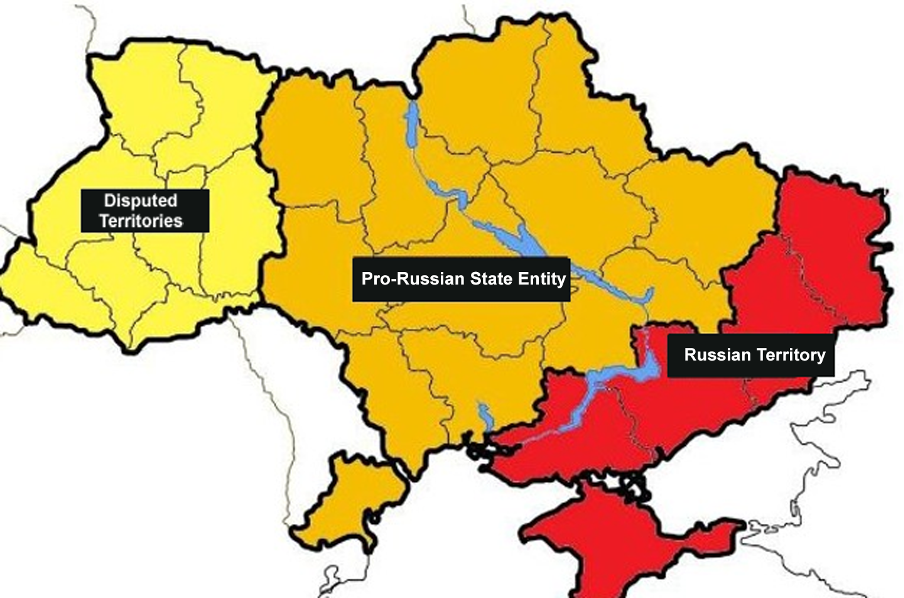Between Christmas and New Year, the world watched as Ukraine’s cities endured a barrage of 300 Russian cruise and ballistic missiles. Added to this blitz were attacks by more than 200 Iranian-made attack drones that rained destruction on Kyiv, Dnipro, Lviv and Odesa.
Ukraine’s air defense and electronic warfare units downed more than 70% of the incoming barrage. The Russian missiles that reached their targets slammed into shopping centers, apartment buildings and metro stations. More than 130 Ukrainian civilians were killed or wounded.
JOIN US ON TELEGRAM
Follow our coverage of the war on the @Kyivpost_official.
Of nearly 500 precision strike weapons unleashed by Russia, not one was aimed at a Ukrainian military target in spite of statements from the Kremlin. All were intended to maim and kill Ukrainian civilians.
No event in the war has so perfectly demonstrated Putin’s murderous hatred of Ukraine.
But there is a method to Russia’s homicidal madness. As attacks on population centers continue, Kyiv faces a deadly dilemma: shield its civilians or protect its frontline soldiers.
For the most part, Ukraine has chosen to defend its cities. Left without overhead cover, Ukraine’s frontline troops remain vulnerable to Russian air strikes and close air support missions.
Critics often point to Ukraine's limited gains on the ground. To be blunt, lacking both air superiority or air defense dominance, Ukrainian ground units are operating under conditions that NATO forces, including the United States army, would find impossible.

US Approves Antipersonnel Mines for Ukraine
Lacking adequate air defense resources, Ukrainian ground commanders are forced to disperse troops and materiel, making the concentration of forces, their movement to the front, and even engagement with the enemy difficult – if not, at times, suicidal.
Local air defense dominance is one of the acknowledge prerequisites for the conduct of modern offensive operations and the winning back of territory. No air defense means no ability to conduct maneuver warfare.
If the United States continues to dither over military assistance to Ukraine, this vicious cycle will continue.
The US, and the west, have supplied more than 25,000 Man Portable Air Defense Systems (MANPADS). With a range of only two or three kilometers, shoulder-fired heat seeking missiles were never designed to provide protection to wide areas of the front line. Unfortunately, MANPADS are often the only air defense tool available to protect entire sectors of the line of contact, severely limiting Ukrainian maneuver options.
Make no mistake, Ukraine has made the very best of what it has been given, spreading its air defenses to cover the maximum possible area, and moving these systems frequently to meet evolving threats and avoid detection. Ever ingenious, Ukrainian engineers have even adapted NATO missiles to be fired from ex-Soviet and captured Russian launch platforms – the so-called FrankenSAMs. But even these engineering marvels have not been sufficient to fill the gaps.
What Ukraine needs urgently are not only increased numbers of air defense weapons, but also the ability to link these systems and sensors into a nation-wide, integrated air defense network.
The US-designed long range Patriot system is the keystone of Ukraine’s air defense. As capable as the Patriot is, it not a single solution. It needs the support of other complimentary, mobile, and shorter-range systems.
NASAMS (Norwegian Advanced Surface-to-Air Missile System) is a turnkey solution, as it uses the NATO AMRAAM missile and was purpose designed to network dispersed batteries, as was the German developed IRIS-T. These air defense systems and missiles are available and are in supply. All are desperately needed, but still, Ukraine waits.
The west first refused, and then promised to provide F-16 fighters to Ukraine. Though efforts are now, finally, underway to train Ukrainian pilots, mechanics, and aviation ordnance personnel, getting F-16 squadrons into the fight will take months.
In the meantime, Ukrainian civilians will continue to perish under Russian missile attacks and Ukraine will face a continuing stalemate along the front.
Ukraine desperately needs a fully functioning, multi-platform, nation-wide air defense network. The US needs to step up.
The views expressed in this opinion article are the author’s and not necessarily those of Kyiv Post.
Chuck Pfarrer
A former Squadron Leader for the US Navy’s SEAL Team Six, Chuck Pfarrer is a New York Times Best Selling author. As a journalist, he has written extensively on Benghazi, and during the US-Afghan War reported from Kabul and Bagram while flying missions with the Afghan Air Force. Pfarrer has appeared as a military affairs and counter-terrorism expert on CNN, ABC, BBC, CSPAN2, NPR, Al Jazeera, CBC, and MSNBC. He’s written Op Eds for the New York Times and served as a Senior Correspondent and Associate Editor of the Counterterrorist Journal.
You can also highlight the text and press Ctrl + Enter






